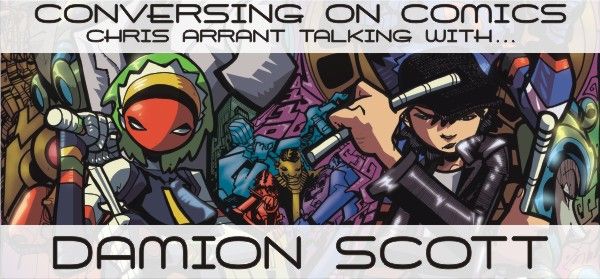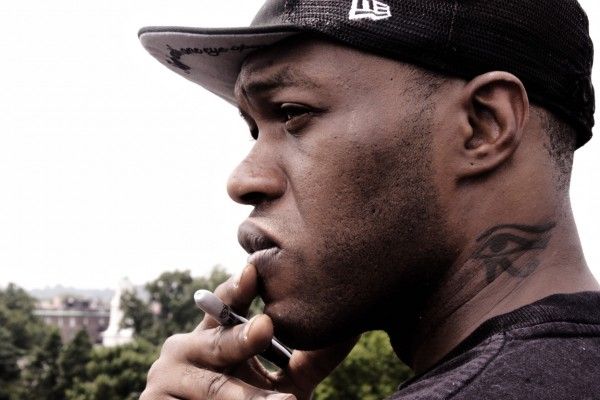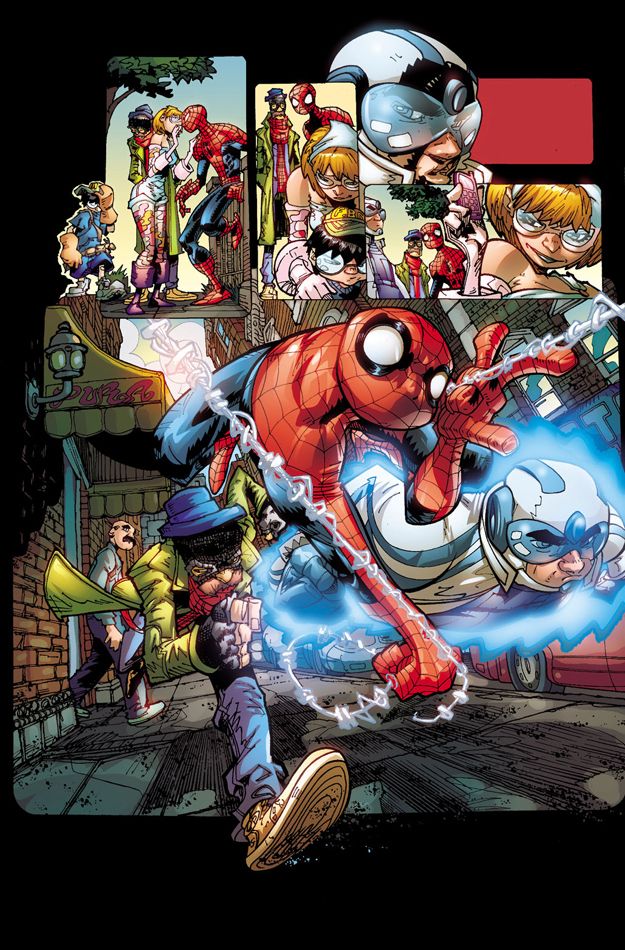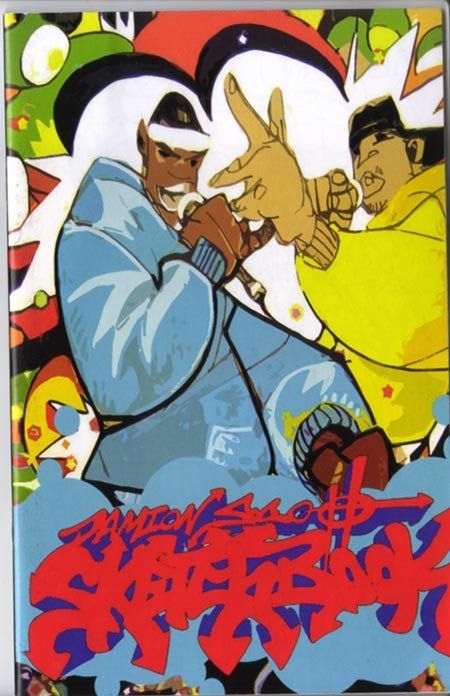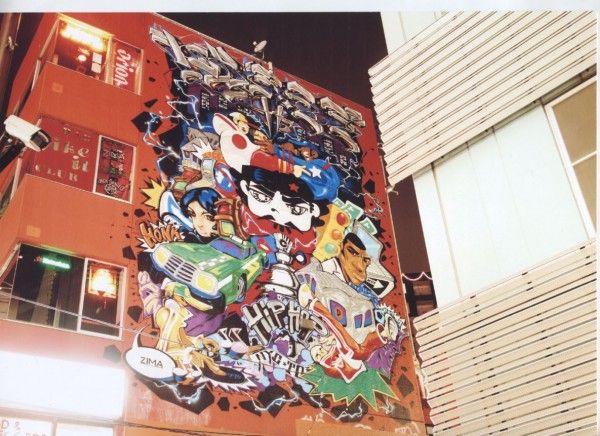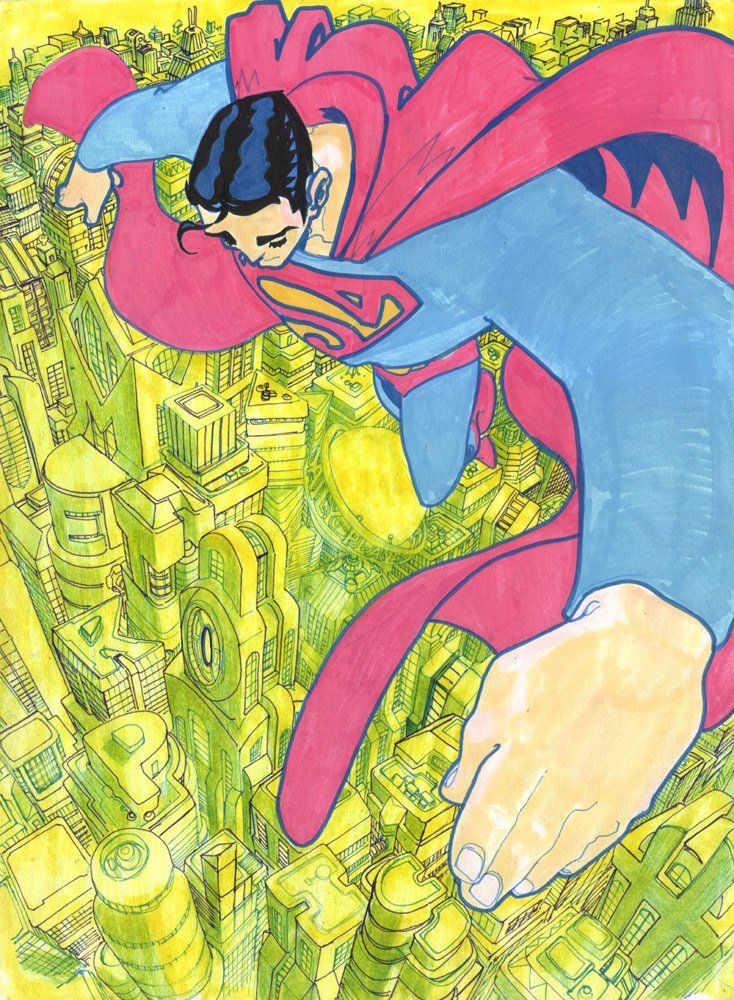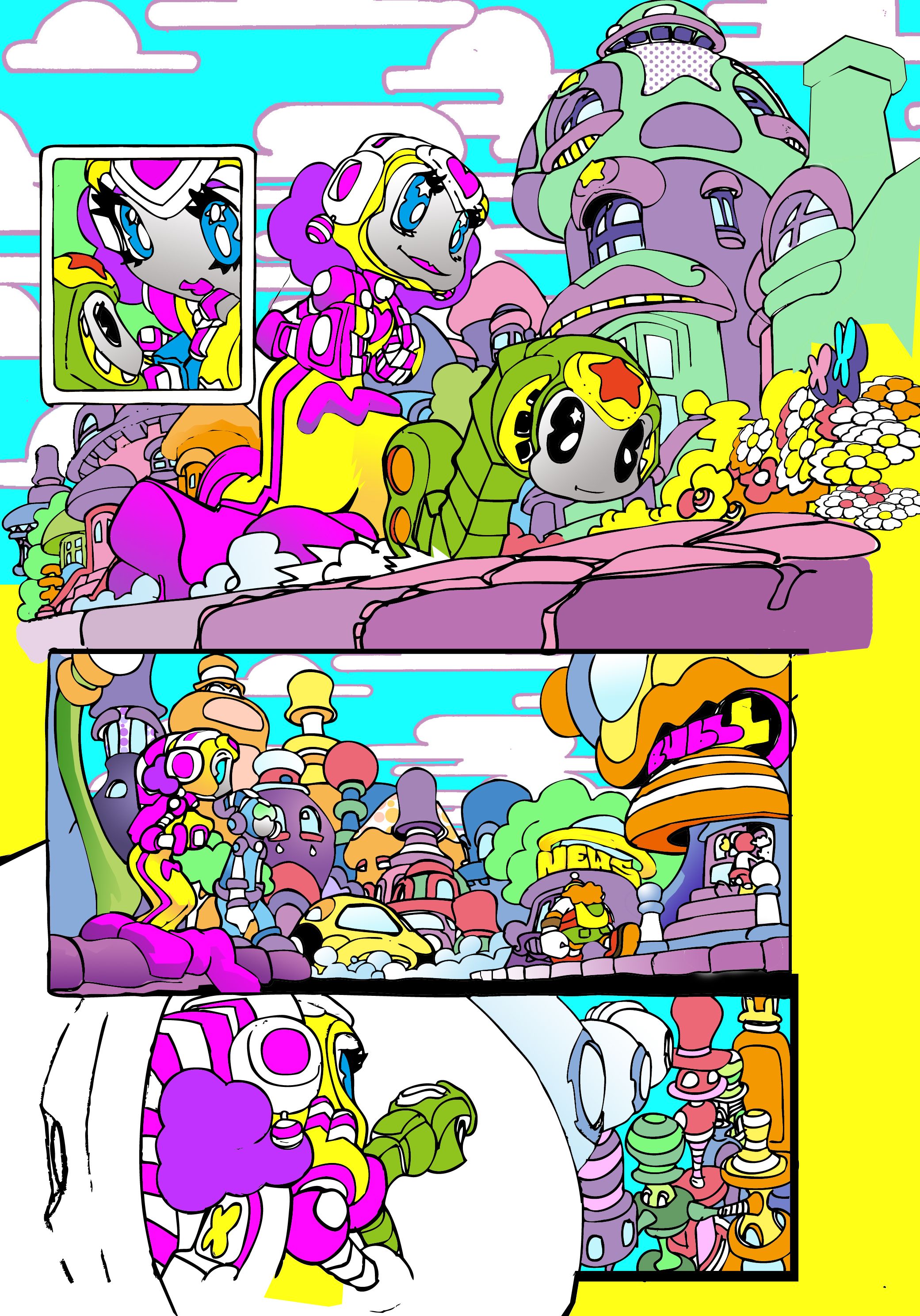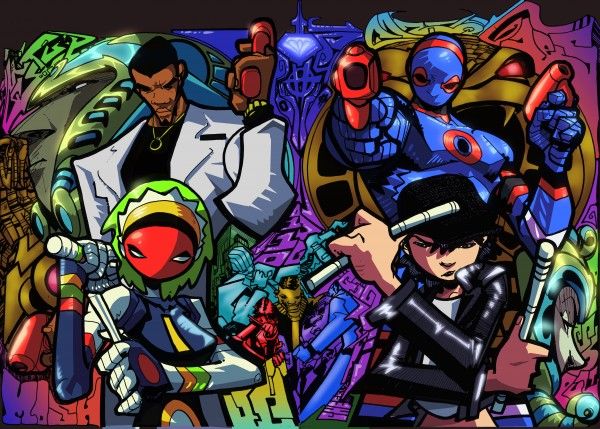Comic readers like underdogs, both in comics and in comics creators. They like to see someone start off small and build themselves up with achievements, skill and perseverance. In recent years we've seen a number of talents catch fire as they went from comics newbie to comics celebrity, from Nick Spencer to Becky Cloonan. Several years back there was one artist who was right on the cusp of breaking into the exclusive A-list level of creators who decided instead to leave for something else. But now he's back.
Artist Damion Scott graduated from the Kubert School in the late 1990s with a full head of steam and took that to DC Comics, where he climbed the ladderr from 1999 to 2006, refining his style and defining his name on books like Robin and Batgirl. By the end of his run on Batgirl, he was seemingly ready to shine -- and did so as the youngest artist picked to headline an issue of DC's prestigious (but short-lived) Solo anthology. After that, he produced a miniseries featuring the Teen Titans' Raven, and then ... nothing. Well, nothing in the United States. In 2007, Scott moved to Japan to pursue commercial and fine art, doing magazine illustrations, street art and gallery shows. He made a rare cameo in American comics with a short for 2009's Deadpool #900, but by and large this budding top talent was absent for four years. But last month Scott returned with the first of a two-part story in Marvel's Web of Spider-Man featuring a group of street-level heroes from his native Brooklyn. And he's not stopping there.
For this interview I exchanged emails with Scott for several weeks, with the artist writing from Tokyo and New York, where he divides his time. We talked about his return to American comics and his art in Japan, as well as his upcoming comic series Duppy.
Chris Arrant: What are you working on today, Damion?
Damion Scott: Currently I'm working on comic-book and T-shirt designs in collaboration with the Japanese brand 5-0 Duppies. The comic book is called Duppy. It's a ghost story I've been waiting for years to tell, so it's cool to see it finally coming together. It's scheduled for release spring 2013. I'd like to have an English version out by summer 2013.
You’ve been very missed in the world of comics, and your surprise appearance in Deadpool #900 was very exciting, and now you're back again with a Spider-Man story. What brought you back again for this two-part story in Web of Spider-Man?
I was "missed"? Thanks. What brought me back? A sincere love and appreciation of comics. After five years studying in Japan, it was just time to bring back what I've learned into the game.
When you say “studying in Japan,” what have you been studying?
Mostly studying art, but the whole culture in general. Japan has a great history, you can see it all unfold in its arts. The manga and anime scene in Japan is rich with talent, but there's just as much talent in the urban and fine-arts scenes. All that, plus the language and writing ... I was surrounded. There was always something new to learn.
The story in Web of Spider-Man is about a team called the Brooklyn Avengers. What can you say about the story in this issue, and what attracted you to it?
The story takes place in Brooklyn, which is my hometown. So it's special -- it's right up my alley. I've always wanted to do a Spider-Man book where New York City was equally represented as a character. This story touches on that by showing the diversity of Brooklyn. Seeing how Spidey relates to his environment and community adds another dimension to the character.
You’re best known for your DC work on Batgirl, Robin and that great issue of Solo, but you’ve done short stints on Marvel’s Spider-Man on two separate occasions. What is it about that character that pulls you toward him?
Spider-Man has always been my favorite comic book character, I guess it goes back to the New York thing. I always loved being able to imagine Spidey swinging around the city. Spider-Man is like the unofficial mascot of NYC -- it's always an honor for me to draw him.
You stand out from the stereotypical comic artist for many reasons, one of them being your more urban, graffiti-style of artwork. Has it been hard for you not to draw in a “house style” and get work for yourself in comics?
It's been challenging. I never really drew in a "house style," but I feel my style is very "classic comics" in its fundamental nature. My goal was never to draw in or create the style of the day. The goal was always to collect the industry's history of art styles as a whole -- era to era. I wanted to create a style that is an amalgamation of the entire history of comic book art in America, and abroad, with some modern-day funk added to it.
I always try to draw in a style that suits the story. If you were to look through the Batgirl run, you'd see that every story arc has a slightly different stylistic approach. The book took on a more dark "wraith"- like approach when Batman was in it, softer, rounder more bubbly-girl approach when Spoiler was in it, and something in between the Batman/Spoiler style when Robin made an appearance. Raven had a psychedelic approach to suit her powers and the psychological aspects of the story, and Deadpool was a bit more gritty and hard-edged. I believe the story creates the style -- not the "house." With Spider-Man and the Brooklyn Avengers, the story is fun, bouncy and colorful. It's a very classic Spidey story, so the style I went for is just that.
I would like to do a Spider-Man story with a darker, heavier edge to it -- I'm ready to do something dramatic. Hint-hint, Steve Wacker.
Skipping around a bit, let's talk about travel. Since you stopped doing comics full time in 2008, I read you moved to Tokyo and opened up a studio. Can you tell us about your past four years?
I moved to Japan around 2007. I was working for DC on the Raven miniseries at the time. I signed up with an agency and pretty much started getting commercial-art jobs right away. It was clear I would have to make a certain commitment to Tokyo's art scene to really establish myself. I wasn't super-persistent about pursuing comic work. Street art has a strong presence in Tokyo, so I was free to go back into my graffiti roots. The art studio consisted of about 10 other artists from Japan and other parts of the world. We each brought something different to the table, so we'd collaborate on design jobs. Most of our work came out of the music and street-art scene -- CD jackets, T-shirt design, murals, and comic books for ad campaigns.
What made you decide to leave comics – and America – and in the first place?
Leaving comics was never my intention, it just sorta happened. Living in Japan was a childhood dream. As a kid, I fantasized about it just as much as I did about drawing comics.
Japan blew me away creatively! There are aspects of the culture that are perfectly suited for the creative work environment. It's hard to explain what it is specifically, but its a kind of "quiet" that we don't often get on this side of the world.
That quiet gave me the opportunity to re-evaluate why I do what I do. Thing you gotta understand is, I went from high school to the Joe Kubert School and then straight into regular work at DC Comics. DC was about six years of monthly deadlines. I never got a chance to stop and breathe -- never really took a moment to look at my career. It was moving like a freight train, and I was in the last car. Japan was really just a pause to collect myself while learning some new things.
Do you still live in Japan?
Currently, I'm back and forth between New York City and Tokyo. It's always a slight adjustment landing on either port, but its been good on both ends. I have an easier time holding my focus in Japan, but it's the constant state of flux in America that motivates me to want to create. I guess I would say that New York breeds the ideas but Tokyo is the place to refine them.
In a dire search to find more work from you, I found one mention in a Japanese-language website that you did a comic in Japan that was printed in both English and Japanese. Can you tell us about that?
I think you mean Saturday Morning Cartoons, also titled SAM-C -- it was a studio jam. I had all these unfinished short stories sitting around and an art show coming up, so I thought it would be cool to collect a bunch of them in a sorta "ashcan" to have available for the show. I was the only comic book professional in the studio, so really it was a chance to school myself, and the other guys, as to some of the process of putting a book together. All the stories are brief and very different stylistically. We wanted to simulate how it would be if a kid was sitting in front of his TV on Saturday morning flipping channels. So we really only get a glimpse into each of the different stories (shows). It was our first stab at putting together a book -- so it has its flaws, but I think the diversity of styles in one book is very cool. Its definitely something i plan to revisit in the future.
Any chance SAM-C could come out in the U.S.?
Yes, I plan to have most of my Japanese works edited and collected for the U.S. in time for Comic-Con International next year. I'll have updates posted from time to time on my website at MOSH0110.com.
Damion, what do you do when you’re not creating art? What hobbies do you have?
When I'm not creating art, I'm probably looking at it -- go to museums, walk around the city and read the walls, graffiti culture, pop culture, and listening to music.
Even though you stepped away from comics for a time, did you still read them?
My comic book jones is for innovative storytelling more so than for detailed draftsmanship, so it's been tough to find my flavor of material lately. OnePiece is an amazing manga -- with the exception of Will Eisner's work, I don"t know that I've experienced so much emotion and excitement on a page. That book is like a roller-coaster ride. I love it.
Next week Chris talks with another artist making his return to comics: Vasilis Lolos. Lolos broke out into comics with his work on the anthologies Pixu and 5, and went on to do acclaimed one-off issues of Northlanders and Buffy: The Vampie Slayer while doing creator-owned works like Pirates Of Coney Island and Last Call. Lolos discusses his mysterious absence from comics shelves these past few years, and the backlog of comics he has waiting for release.

